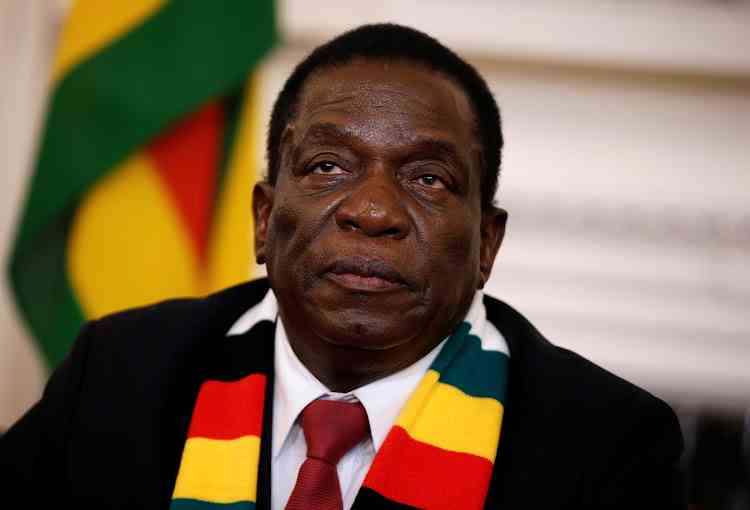
THE outbreak of the coronavirus was declared a public health emergency of international concern.
The virus continues to tear the world apart with a mortality of more than 285 000 as of yesterday.
As with other respiratory infections like flu or the common cold, public health measures are critical to slow the spread of the COVID-19. Public health measures are everyday preventive actions that include:
lStaying home when sick
lCovering mouth and nose with elbow or tissue when coughing or sneezing
lWashing hands often with water and soap
lCleaning frequently touched surfaces and objects
Questions have been raised about when and how schools will open. It is unknown when COVID-19 will end and today, children and young people are global citizens, powerful agents of change and the next generation of caregivers, scientists, doctors, nurses, pilots.
- Chamisa under fire over US$120K donation
- Mavhunga puts DeMbare into Chibuku quarterfinals
- Pension funds bet on Cabora Bassa oilfields
- Councils defy govt fire tender directive
Keep Reading
A crisis like COVID-19 pandemic presents children with the opportunity to learn, cultivate compassion and increase resilience while building a safer and caring community.
Having the correct information about COVID-19 will help diminish students’ fears and anxieties around the disease and support their ability to cope with any secondary impacts in their lives. Who knows, the virus can be our serious guest for even two or so years. Can schools remain closed then?
Considering the virulence of COVID-19, many questions have been raised about the safety of opening schools.
It should be noted that maintaining safe school operations or re-opening schools after a closure requires many considerations which if adhered to, can promote public health.
The school has three pillars that make them run smoothly: teachers, pupils and guardians. The chemistry among these stakeholders is of importance if schools are to be opened. So many cries have been made to the government to open Grade 7, O-Level and A-Level so that their examinations are not disturbed. It is a wise idea.
Our pupils need to finish their learning despite the scourge, but it is prudent that the three pillars in education put their heads together to make it possible. I will look at the pillars and their expected roles:
School administrators and teachers
Following basic principles and measures can help students, teachers and other staff and that will be important in stopping the spread of COVID-19. This, therefore, calls for robust preparations so that opening becomes possible. Recommendations would include the following:
- Sick students, teachers and other staff should not come to school
- Schools should enforce regular hand-washing with safe water and soap or alcohol-based sanitiser. This calls for installation of running water at many schools.
- Clean and disinfect school buildings, classrooms and especially water and sanitation facilities at least once a day, particularly surfaces that are touched by many people like tables, doors, handles of doors or windows. This means schools should be preparing large volumes of disinfectants and knapsacks.
lSchools should provide reliable water, sanitation and waste management facilities and follow environmental cleaning and decontamination procedures. This has to be done now before pupils return.
- Social distancing should be enforced with a minimum seating distance of one metre. Social distancing practices may include staggering the beginning and end of the school day, cancelling assemblies, sports games and other events that create crowded conditions.
- Decongesting classes should be done and this is possible in some schools when only examination classes are allowed back. It allows for spacing in order to cut down on crowding.
- Monitoring school attendance — implement school absenteeism monitoring system to track student and staff absence and compare against usual absenteeism pattern of the school. Inform health authorities about the extra-ordinary absenteeism and a follow-up can be done if it is due to the respiratory system.
Parents/caregivers
Parents are critical to their children and they can play important roles on the following:
- Monitoring their children’s health and keeping them home when they are unwell.
- Teaching and modelling good hygiene for the children
- Encouraging children to ask questions and express their feelings with them and teachers.
- Preventing stigma by using facts and reminding students to be considerate for one another
- Allowing screening and testing of children as deemed necessary by health personnel. Use of infrared thermometers is important for unwell students who may be harbouring high temperatures.
- Seeking early medical attention when children seem unwell, hence early detection of problems.
Students
Students should understand basic age-appropriate information about COVID-19 that includes symptoms, mode of transmission, complications or prevention of transmission.
Social media information may be destructive, hence it should be treated with caution. Therefore, students have a duty to do the following:
- Inform parents or caregivers when they are unwell so that they stay at home
- Protect themselves — hands should be washed frequently with soap and water for at least 20 seconds. Alcohol-based sanitisers should be used as well
lAvoid touching their faces —thorough health education about touching faces or mucous membranes should be done. For many, it is a mannerism to touch nostrils, eyes or mouth.
- Avoid sharing of cups, eating utensils, food or drinks with others. This should be emphasised in schools as many students are used to sharing.
- Avoid stigmatising peers about the sickness bearing in mind that the virus knows no boundary, ethnicity, sex or age.
- Be willing to be screened and tested in the event of any suspicious symptoms. Rapid tests can be done at the earliest convenience.
Considering the above measures, it can be noted that many schools still lack resources to put in place the correct measures. A lot of government support is needed. Our government should move with speed with the assistance of the donor community to ensure there is water and sanitation at many schools.
Sanitisers should be supplied in large volumes to schools while health officials should be in the proximity to ensure public health measures are adhered to.
My suggestion, therefore, is that examination classes be opened as soon as possible as fewer students will be taken into schools thus putting less pressure on the few available resources.
COVID-19 has the potential to spread to the entire nation through one infected student. We have to be very alert as we contemplate opening schools.
Johannes Marisa is a medical doctor and a public health practitioner who writes in his own capacity. He can be accessed on [email protected].











